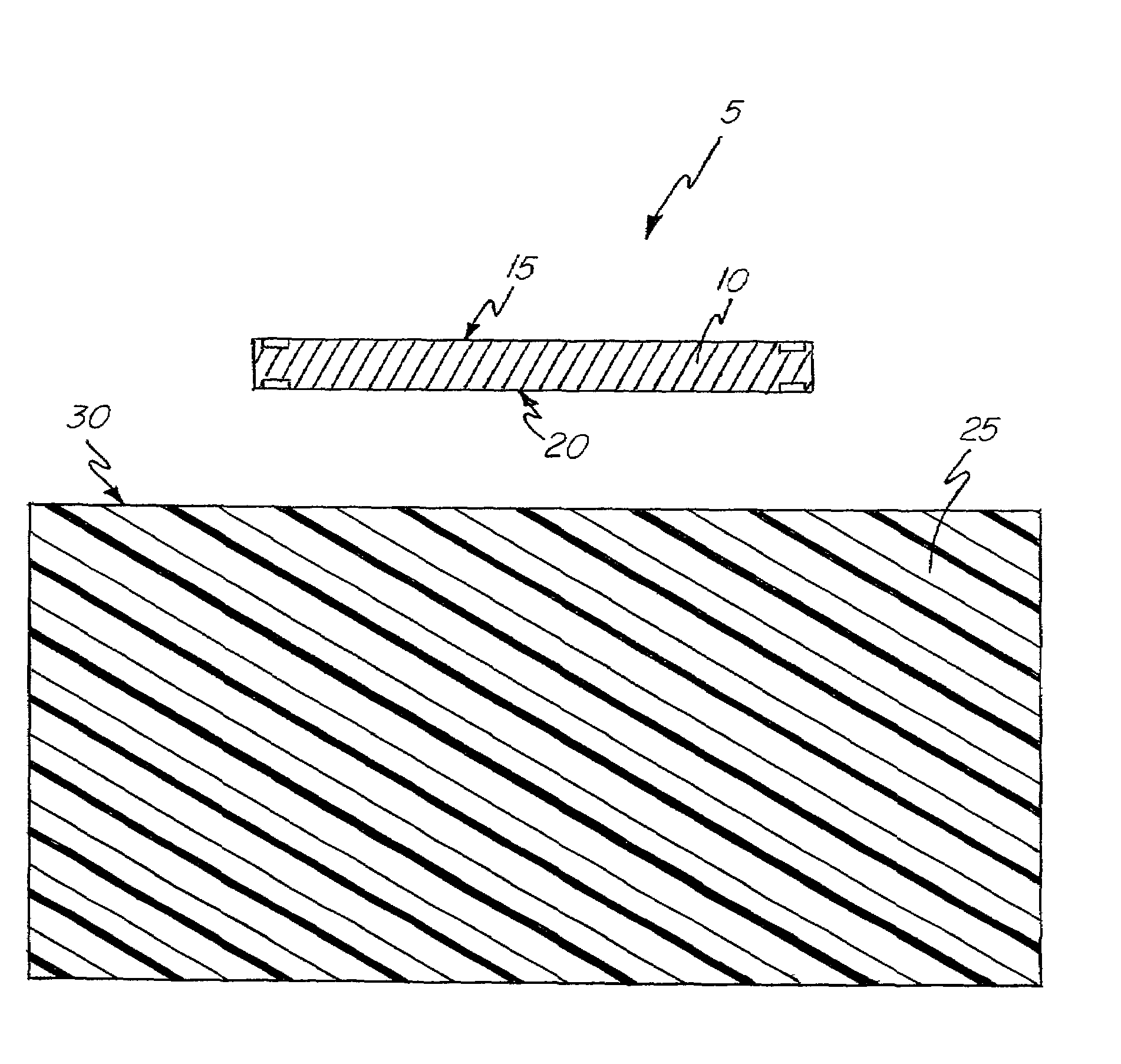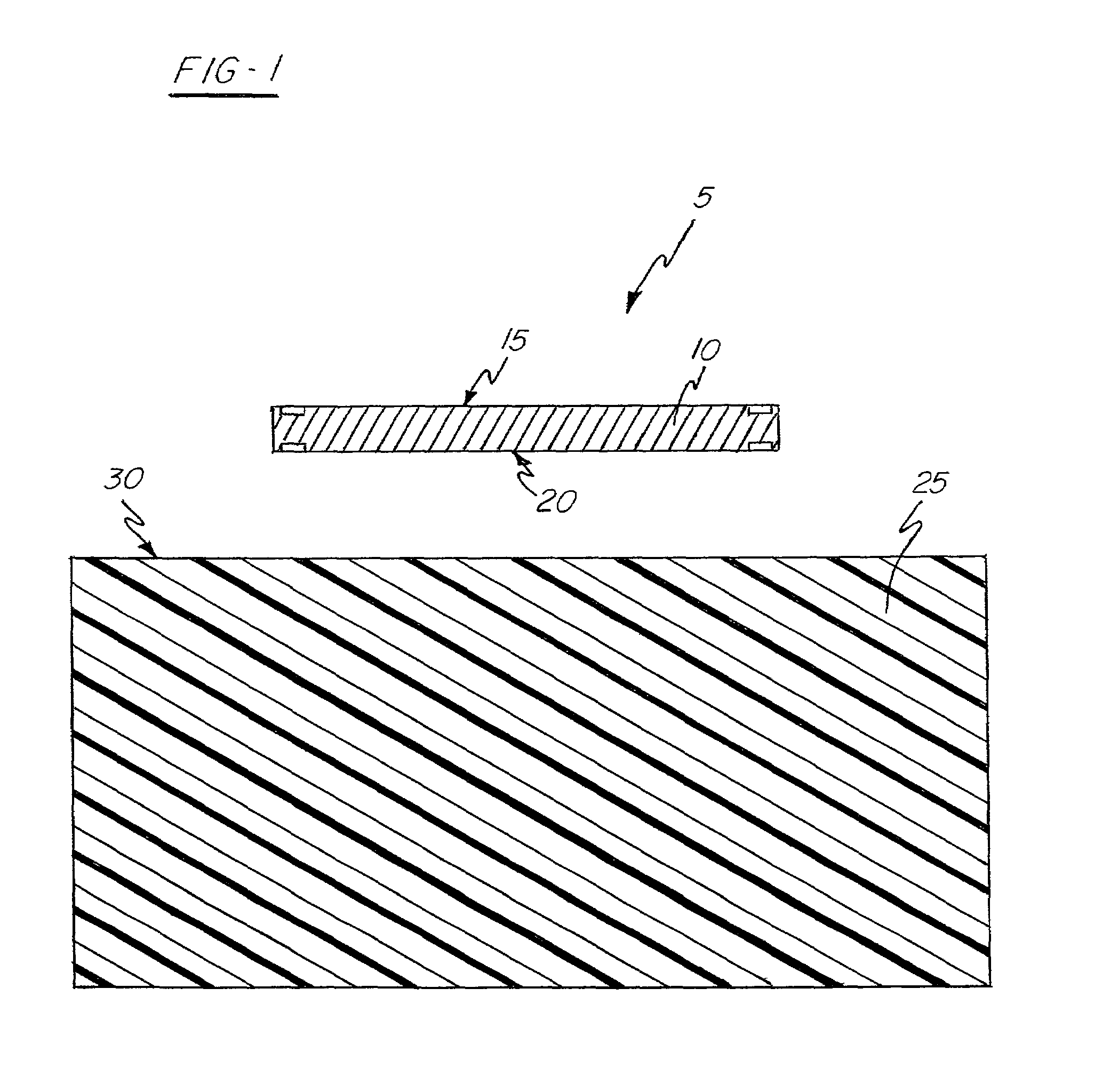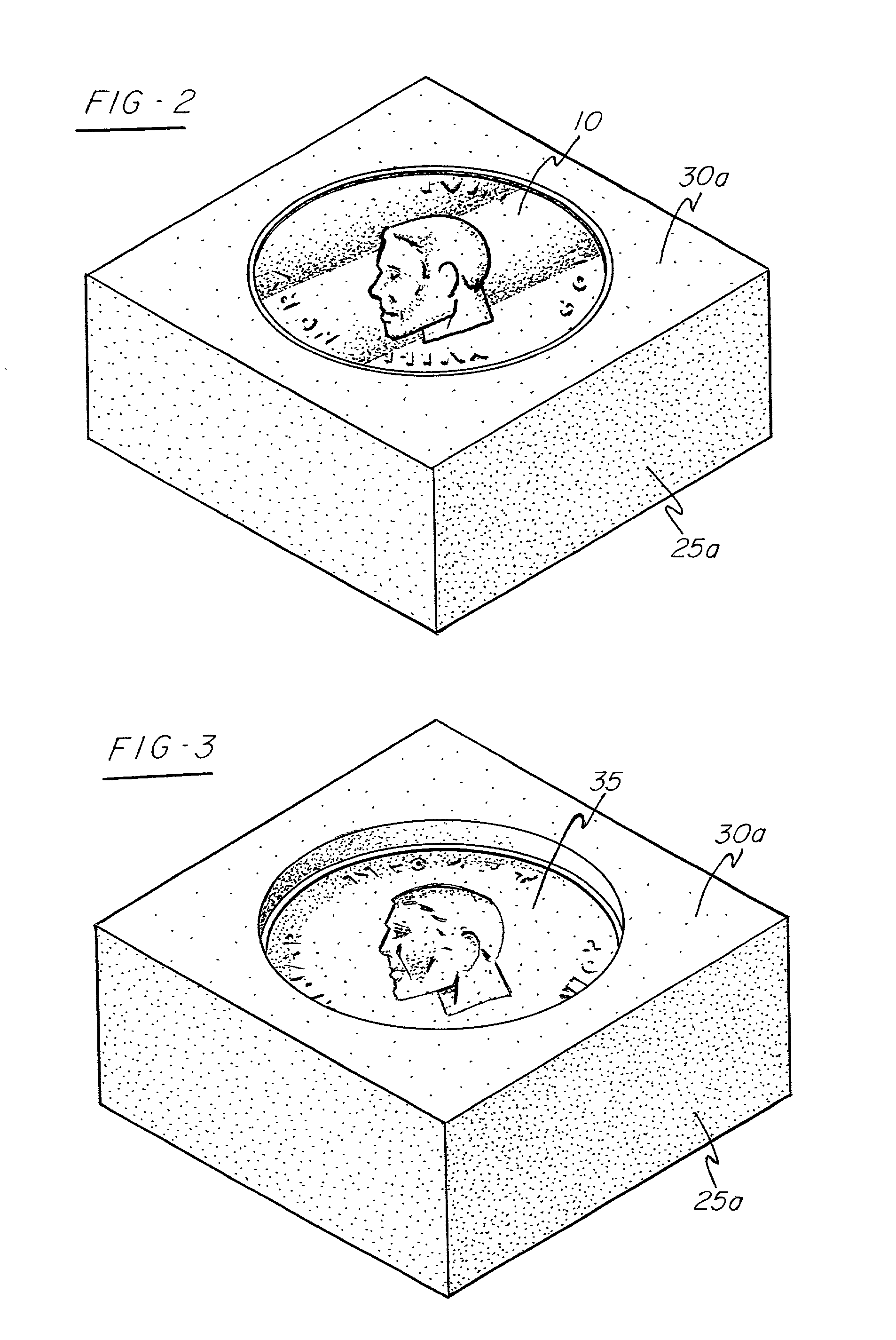Structural and optical applications for shape memory polymers (SMP)
a shape memory polymer and polymer technology, applied in the direction of applications, dough shaping, manufacturing tools, etc., can solve the problems of high cost, large complexity and expense associated with manufacturing related molds, and high cost of machining methods associated with casting metal molds, etc., to facilitate revolutionary processes for casting. , high surface definition and low initial cost
- Summary
- Abstract
- Description
- Claims
- Application Information
AI Technical Summary
Benefits of technology
Problems solved by technology
Method used
Image
Examples
example 1
[0070]A polymeric reaction mixture comprising 7% vinyl neodecanoate, 1% divinyl benzene, 2% benzoyl peroxide, and 90% styrene, wherein the percentages were by weight, based on the total weight of the mixture, was heated in an oven maintained at atmospheric pressure and a temperature of 75° C. for 24 hours.
[0071]A clear sheet of a cured SMP was obtained at the conclusion of this polymerization reaction.
example 2
[0072]A polymeric reaction mixture comprising 7% vinyl neodecanoate, 1% divinyl benzene, 2% benzoyl peroxide, 30% polystyrene, and 60% styrene, wherein the percentages were by weight, based on the total weight of the mixture, was heated at 75° C. at atmospheric pressure for 24 hours.
[0073]A clear sheet of a cured SMP was obtained at the conclusion of this polymerization reaction.
[0074]SMPs are processed into a desired memorized shape by one of a number of known processes. Die casting, hot pressing, solvent casting and extrusion are a few of the known means for processing SMP powder or resin into a memorized shape. Other processing methods are in accordance with this invention as well. Some pre-processed SMPs can be molded and annealed to obtain an alternate memorized shape. Annealing allows the related polymer network to retain the desired memorized configuration in a “relaxed” state. Preferably, the SMP is processed to define a memorized shape in the form of a flat sheet or as an “...
PUM
| Property | Measurement | Unit |
|---|---|---|
| Temperature | aaaaa | aaaaa |
| Shape memory effect | aaaaa | aaaaa |
| Shape | aaaaa | aaaaa |
Abstract
Description
Claims
Application Information
 Login to View More
Login to View More - R&D
- Intellectual Property
- Life Sciences
- Materials
- Tech Scout
- Unparalleled Data Quality
- Higher Quality Content
- 60% Fewer Hallucinations
Browse by: Latest US Patents, China's latest patents, Technical Efficacy Thesaurus, Application Domain, Technology Topic, Popular Technical Reports.
© 2025 PatSnap. All rights reserved.Legal|Privacy policy|Modern Slavery Act Transparency Statement|Sitemap|About US| Contact US: help@patsnap.com



